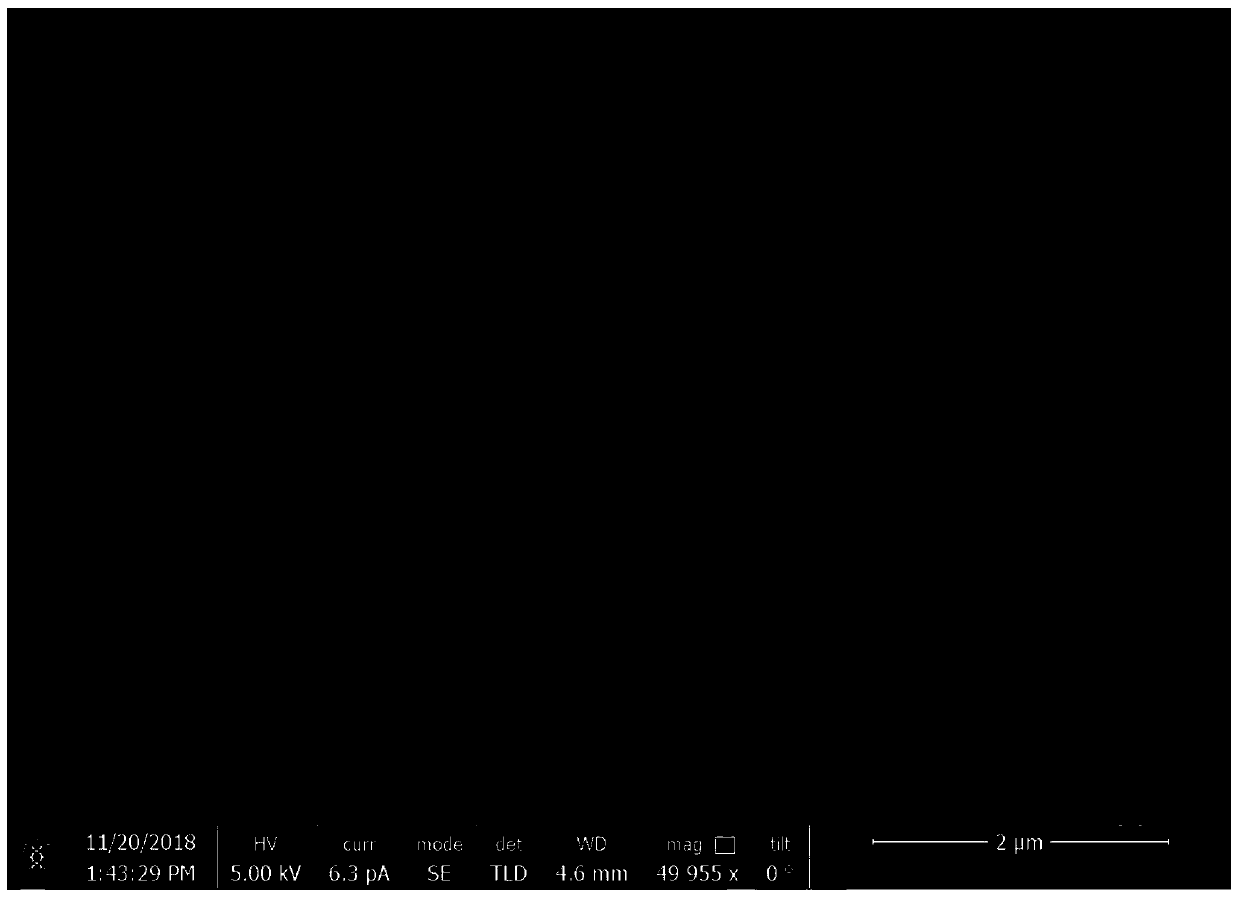MoSe2@C electrospinning hollow nano-fiber and preparation method and application thereof
A nanofiber and hollow technology, applied in the field of nanomaterials, can solve problems such as capacity loss, and achieve the effects of strong resistance, abundant reserves, and easy access to raw materials
- Summary
- Abstract
- Description
- Claims
- Application Information
AI Technical Summary
Problems solved by technology
Method used
Image
Examples
preparation example Construction
[0028] The present invention provides a MoSe 2 @C Electrospinning hollow nanofibers and preparation method thereof, with sodium molybdate, sodium selenite, ammonia and polyvinyl alcohol (PVA M W =83368) as raw material, deionized water as solvent, prepared MoSe by electrospinning 2 The method of @C hollow nanofibers, the specific steps are as follows:
[0029] S1. Dissolve water-soluble molybdenum salt in deionized water in proportion, and then stir on a magnetic stirrer for 5-10 minutes until the solution is transparent; the mass fraction of molybdenum source in ammonium molybdate tetrahydrate is 5-15%.
[0030] The water-soluble molybdate is ammonium molybdate (NH 4 ) 6 Mo 7 o 24 4H 2 O, the amount of ammonium molybdate is 1.0~2.5g;
[0031]S2. Slowly add 0.4-1.2 g of polyvinyl alcohol into the solution obtained in step S1, and stir at 60° C. for 8-12 hours until the solution becomes a transparent sol;
[0032] S3, use the transparent sol obtained in step S2 to carry...
Embodiment 1
[0043] Take by weighing 1.220g ammonium molybdate ((NH 4 ) 6 Mo 7 o 24 4H 2 O), then dissolved in 10ml of deionized water, the solution was stirred under magnetic stirring for 5min, after stirring evenly, polyethylene glycol was slowly added to the homogeneous transparent solution obtained in the above steps, the water temperature was maintained at 60°C, and magnetic stirring was carried out for 8h Until a stable transparent sol was obtained, the electrospinning precursor was obtained, and then spinning was performed at a constant speed of 0.4ml / h when the electrospinning voltage was 15kv and the spinning jet was 16cm away from the collector. Next, the obtained nanofibers were collected and dried overnight in a vacuum oven at 60°C, and then stabilized at 180°C and 300°C for 0.5 h respectively, and then the dried nanofibers were heated in Ar(95%) / H 2 (5%) sintering in the atmosphere, reduction at 500 ° C for 3 h, the heating rate is 3 ° C / min, to obtain carbon-coated MoO ...
Embodiment 2
[0045] Weigh 1.500g ammonium molybdate ((NH 4 ) 6 Mo 7 o 24 4H 2 O), then dissolved in 10ml of deionized water, the solution was stirred under magnetic stirring for 6min, after stirring evenly, polyethylene glycol was slowly added to the homogeneous transparent solution obtained in the above steps, the water temperature was maintained at 60°C, and magnetic stirring was carried out for 9h Until it becomes a stable transparent sol, the electrospinning precursor is obtained, and then, when the electrospinning voltage is 18kv, and the spinning jet is 17cm away from the collector, spinning is performed at a constant speed of 0.5ml / min. Next, the obtained nanofibers were collected and dried overnight in a vacuum oven at 60°C, and then stabilized at 180°C and 300°C for 0.5 h respectively, and then the dried nanofibers were heated in Ar(95%) / H 2 (5%) sintering in the atmosphere, reduction at 550 °C for 5 h, the heating rate is 1 °C / min, to obtain carbon-coated MoO 2 . Next, the ...
PUM
| Property | Measurement | Unit |
|---|---|---|
| Diameter | aaaaa | aaaaa |
Abstract
Description
Claims
Application Information
 Login to View More
Login to View More - R&D Engineer
- R&D Manager
- IP Professional
- Industry Leading Data Capabilities
- Powerful AI technology
- Patent DNA Extraction
Browse by: Latest US Patents, China's latest patents, Technical Efficacy Thesaurus, Application Domain, Technology Topic, Popular Technical Reports.
© 2024 PatSnap. All rights reserved.Legal|Privacy policy|Modern Slavery Act Transparency Statement|Sitemap|About US| Contact US: help@patsnap.com









